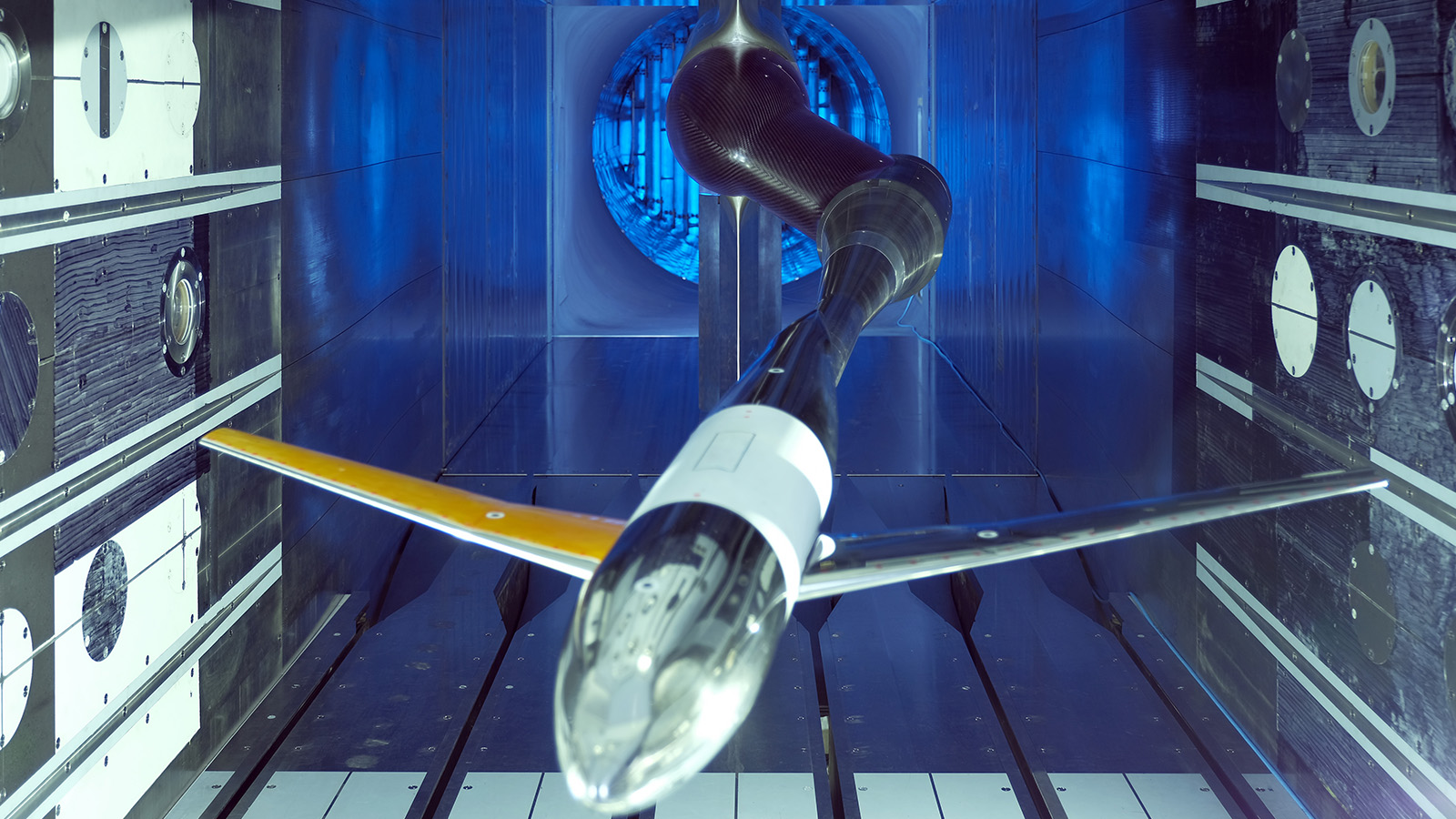Stay Up to Date
Submit your email address to receive the latest industry and Aerospace America news.
The Ground Testing Technical Committee focuses on evaluating aircraft, launch vehicles, spacecraft, structures and engines in wind tunnels and other facilities.
This past year, the U.S. Air Force’s Arnold Engineering Development Complex maintained critical testing at its many geographically separated units. The AEDC Propulsion Wind Tunnel 16S in Tennessee demonstrated tunnel operability after a multiyear reactivation effort by testing an AGARD-B standard model in January. The supersonic wind tunnel has a 16-foot-by-16-foot (5-meter-by-5-meter) test section that operates from Mach 1.5 to Mach 4.75.
The Unitary Plan Wind Tunnel at NASA’s Ames Research Center in California ran numerous tests during the ongoing pandemic, despite a maintenance outage from December 2020 to May. A notable upgrade included the installation of large optical windows in the 11-foot test section. These windows allow for a larger unobstructed view of any model using optical test techniques. Following the upgrade period, researchers tested the Ames Check Standard Model in the 11-foot section to establish new baseline performance data for the modified tunnel. Another multi-month upgrade that concluded in June was the demolition and replacement of the 45-foot-diameter aftercooler in the 9-foot-by-7-foot supersonic wind tunnel. An Integrated Systems Test followed the installation, and the 9-foot-by-7-foot tunnel has resumed production customer testing.
NASA completed its Engineering and Safety Center and Space Launch System high Reynolds number test in the National Transonic Facility in Virginia in April after a one-year delay due to the pandemic. The objective was to assess and characterize Reynolds number effects on the ascent aerodynamics of the SLS launch vehicle and use the results from the test to inform and update the SLS Ascent Aerodynamics Force and Moment Database and the SLS Ascent Aerodynamics Partial Derivatives Database.
RUAG’s Large Wind Tunnel Emmen, a 5-meter-by-7-meter tunnel, in Switzerland expanded the facility capabilities for testing both scaled and full-scale flight urban air mobility models. RUAG added provisions to ensure sufficient electrical power and more flexible means to perform aeroacoustic tests. The first specimen of a new compact hydraulic motor family, greater than 100 kilowatt (135 horsepower) and ranging from maximum speeds over 30,000 revolutions per minute, completed testing prior to being used to drive a scaled turbofan simulator in the Large Wind Tunnel Emmen as part of the European Union-sponsored TRUflow project.
The Japan Aerospace Exploration Agency, or JAXA, demonstrated a novel approach for efficiently constructing single-structure wind tunnel models via application of additive manufacturing. Single-structure models allow for a more accurate representation of structural characteristics due to aerodynamic and aeroelastic phenomena, thereby increasing confidence in the results. Using this approach, scientists fabricated half-span wing models for transonic testing in the JAXA 0.6-meter-by-0.6-meter flutter wind tunnel. The flutter test results showed good agreement with numerical aeroelastic solutions, validating this unique design approach.
The European Transonic Windtunnel in Germany expanded its unique cryogenic high Reynolds testing capabilities via demonstrations of the Lean Secondary Roll Mechanism and Remote-Controlled Aileron Actuator. The Lean Secondary Roll Mechanism is a double-knuckle roll mechanism designed for low interference, wings-level yaw measurements of transport aircraft configurations, thereby increasing sideslip testing capabilities with excellent productivity. The Remote-Controlled Aileron Actuator allows for complete control surface sweeps while the model remains in the pressurized cryogenic test section — no transport or manual rigging efforts needed.
The Transport Canada Remotely Piloted Aircraft System task force engaged the National Research Council to conduct wind tunnel experiments in the Propulsion Icing Tunnel in Ottawa this past year to measure the magnitude of urban airflow fluctuations on four representative Canadian cities: Vancouver, Toronto, Halifax and an artificial city. The objective was to support Transport Canada in the development of regulations for safe operation of RPAS within urban environments by providing knowledge on airflows within Canadian cities and the flight response of commonly used RPAS to these airflows.
Contributors: Peter Aschwanden, David Chan, Luc Levasseur, Shinji Nagai, Eric Paciano, Rebecca Rought, Harold Quix and John VanHorn
Stay Up to Date
Submit your email address to receive the latest industry and Aerospace America news.




